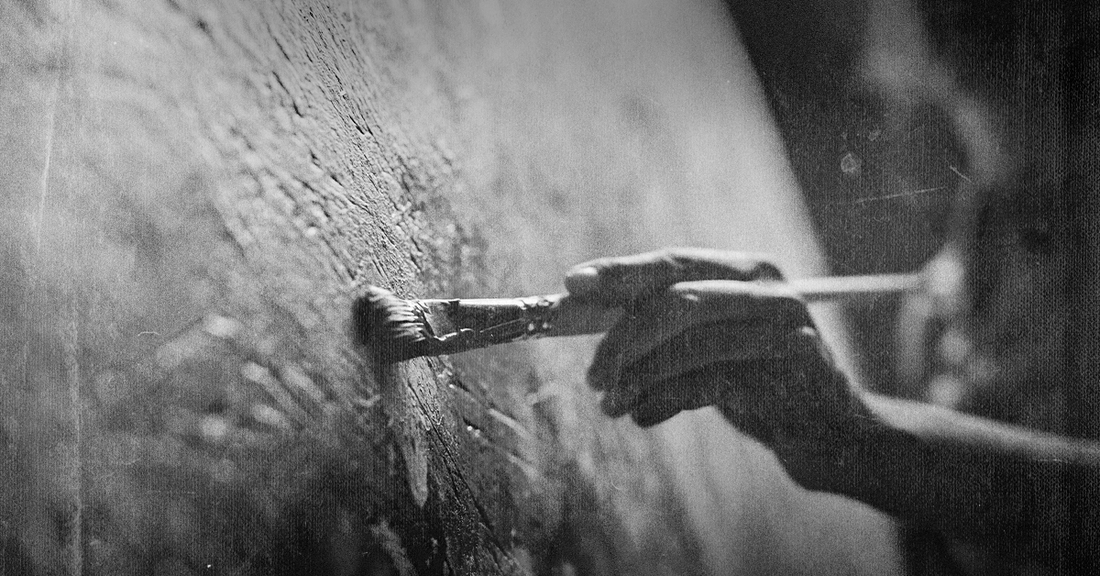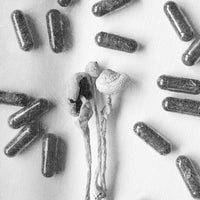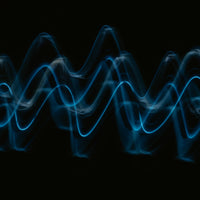Have you ever experienced what it’s like to be “in the zone?” To tap into that sensation of pure focus on the task at hand, a state of consciousness when all your senses become heightened, and time itself seems to slow down—and all without the benefit of hypnosis or recreational pharmaceuticals?
This phenomenon, broadly described by behavioral psychologists as the “flow state,” is frequently associated with athletes and artists—for example, the basketball player for whom the rim appears as big as a hula hoop, or the composer who sits down to write a piece of music and a fully formed composition emerges, seemingly without effort or even conscious thought.
The term “flow” was coined in the mid-1970s by psychologist and researcher Mihaly Csikszentmihalyi, who says he grew fascinated with painters who immersed themselves so deeply in their work that they would enter a trance-like state of intense concentration, often forgoing food, water and sleep for hours on end. Research into flow grew rapidly in the ’80s and ’90s, expanding to examine the phenomenon in an ever-widening range of endeavors that included athletics, education, music and spirituality.
Flow ... to the Extreme!
Today, Steven Kotler is perhaps the world’s most prominent researcher into flow. As executive director of the Flow Research Collective and the bestselling author of a number of books on the subject, including The Rise of Superman and The Art of Impossible, Kotler has devoted his professional life to studying the neurobiology of flow to discern how the brain and body work as one to deliver peak performance.
Whereas Csiksgentmihalyi initially sought to understand how flow affected artists, Kotler says he was inspired to study flow while working as a journalist immersed in a vastly different community: extreme athletes. The 1990s, he says, are often referred to as the “Era of the Impossible,” owing to the eye-popping feats achieved by surfers, skiers, snowboarders, rock climbers and other adrenaline junkies who pushed the limits of so-called “X-Games mode.” These athletes weren’t just breaking records, he says, they were routinely re-breaking and re-re-breaking those same records at a pace that had never been seen before in any athletic field.
“I was friends with these athletes and they mostly came from horrific childhoods, from broken homes, [and] had very little education or money,” Kotler says. “There was a lot of risk-taking behavior, and a lot of drugs and alcohol. Normally you put those things together in a community and people wind up in jail or dead. What doesn’t typically happen is they reinvent what’s possible, yet that’s precisely what was going on. I just had to know why and I discovered that at the center of it all is the state of consciousness we call ‘flow.’”
Expanding on what he learned from studying action-sports athletes, Kotler says he started asking foundational questions about flow and the possibility of extending performance levels in other areas of human achievement. And while research is ongoing, and debate continues within the field, he and his colleagues have settled on six distinct characteristics that typically define the flow state. They are:
- Union of action and awareness: The performer and performance fuse into one as actions become essentially automatic.
- Selflessness: Self-awareness and self-consciousness disappear and the inner critic is silenced.
- Timelessness: Perception of time is altered so that past and future disappear, replaced by a persistent present.
- Effortlessness: Any sense of struggle and strife vanishes as an experience becomes intrinsically rewarding or, in psychological terms, “autotelic.”
- Control: Individuals feel a powerful sense of control over the present situation.
- Intrinsic motivation: The activity itself is so incredibly enthralling that it becomes its own reward, shutting out thoughts of money, prestige, accolades, etc.
 Read more: What Is Your Body Doing While You Sleep?
Read more: What Is Your Body Doing While You Sleep?
Finding the Source of Flow
These characteristics may explain the “what” of flow, but how about the “why?” For what purpose did humans develop the capacity to enter a trance-like state of selflessness, timelessness, focus and ultimate control directed toward the accomplishment of a specific task? The answer, Kotler says, lies in a combination of neurobiology and evolution.
“We believe flow evolved from runner’s high,” he says. “That’s when the body produces a painkiller called anandamide, as well as endorphins, which are also very potent painkillers. The more of these neurochemicals that show up during an experience, the better chance that experience will move from long-term holding into short-term storage. Flow massively heightens learning and memory because it’s a huge neurochemical dump.”
Kotler says that certain actions—like, say, hitting a baseball with a bat—may seem relatively simple but they’re actually quite complex and require a dozen or more different components coming together in perfect harmony. Watching the ball’s trajectory, timing the swing, turning the wrists at the right moment, shifting weight from one foot to another—these tasks must be mastered individually and then in unison into what’s known as a “motorized action plan.”
Flow, Kotler says, is what happens the first time a motorized action plan comes together and an individual successfully executes this kind of complex skill. The resulting neurochemical burst then locks that action plan into memory so the skill can be effectively performed over and over again. And this phenomenon isn’t limited to humans—flow has been demonstrated across the mammalian world, Kotler notes.
“From an evolutionary perspective, knowing you have mastered a skill and can do it under any condition is really important,” Kotler says. “If you’ve ever seen a bear try to take down a moose, the number of patterns that have to be learned to accomplish that is insane. So if the bear is thinking, ‘Oh, I’ve got this down and I can lure this moose into the river and drown it without getting killed,’ that’s a big thing to know.”
Flow played a similarly integral role in human evolution as our ancestral forebears climbed down from the trees and began to engage in significantly more complex behaviors––in particular behaviors like co-hunting with wolves that required group non-verbal communication, Kotler says. It’s not farfetched to trace a direct throughline from those trans-species hunting parties bringing down buffalo to today’s no-look pass leading to an easy lay-up on the basketball court. Whether those early hunters ever developed a buffalo-oriented equivalent to the modern day “alley-oop” remains unknown, however.
Pulling the Triggers
OK, so we know what flow is, how it benefits us and why humans developed this unique ability in the first place. But how do we make it happen? Is it as simple as merely snapping one’s fingers? Or maybe there’s an app you can download? Sadly, it’s not quite that easy. Kotler says researchers have identified 22 different flow “triggers” that work by driving attention to the present moment. Just a few such triggers include clear objectives, complete concentration, facing a challenge that pushes one’s skills to the limits and a high element of risk.
This “risk” trigger is what that Kotler says proliferated among the extreme athletes he met in the 1990s and helped them to achieve the level of flow that led to all those broken records. But he adds that while risk is a universal trigger, what qualifies as “risky” varies from person to person.
“When we take a risk we get dopamine,” he says. “The dopamine makes us brave. It helps us focus. It does a great deal to help us survive the risk-taking. But risk tolerance is based on nature and nurture, so yours may be very different from mine. Teenagers and young adults love physical risk as a flow trigger, but as you get into your 20s and 30s, social risk, intellectual risk and creative risk get really interesting as flow triggers.”
Kotler cautions that achieving flow isn’t a simple matter of taking risks or otherwise engaging some complement of the other flow triggers. The process of honing those motorized action plans to “effortlessly” perform complex tasks can be extraordinarily challenging, and with no guaranteed reward at the end.
“Frustration is built into the process,” he says. “You have to actually get frustrated and overload the brain to essentially create a fight response in the brain. There’s a moment of aggression at the front end of a flow state. It’s not this hippie-dippy thing and it’s not for everybody. But we’re goal-directed systems, so we’re going, ‘Did this work? Did this not work? How do I make it better?’ Failure is a really good thing provided we can learn from it. There’s a lot of information in the non-flow states, in the struggle. Flow is, in a sense, the reward—what makes the struggle so rewarding.”
The good news is that each experience of this struggle to achieve flow beats down the path a little more, smoothing the way to make subsequent efforts at reaching flow just that little bit easier.
“The experience of learning is the same for everyone,” Kotler says. “It’s ‘I suck, I suck, I suck, I suck’ and then ‘Oh look, I don’t suck anymore.’ But most people when they start getting into flow early on they act like teenagers getting stoned for the first time: ’Oh, look at the pretty colors, I feel so wonderful.’ They don’t realize this is a state of peak performance that you can make reliable and repeatable. You can burn in these patterns. And when you spend a lot of time in deeper flow states, you learn how to work with the state, extend it [and] really use it to maximize performance.”
The bottom line: When you’ve put in all that effort to achieve the flow state, go ahead and enjoy the pretty colors, but also be sure to use them to paint your masterpiece.
Malcolm Fleschner is a freelance writer and TV producer based in the San Francisco Bay Area. Read Culture Shlock, his award-winning humor column on Substack.




